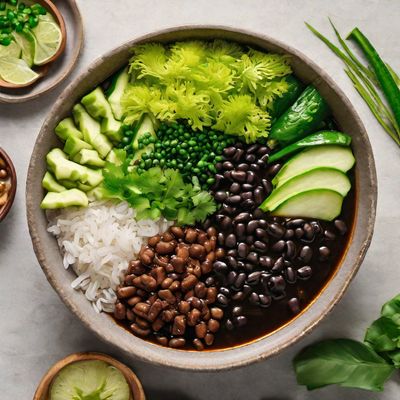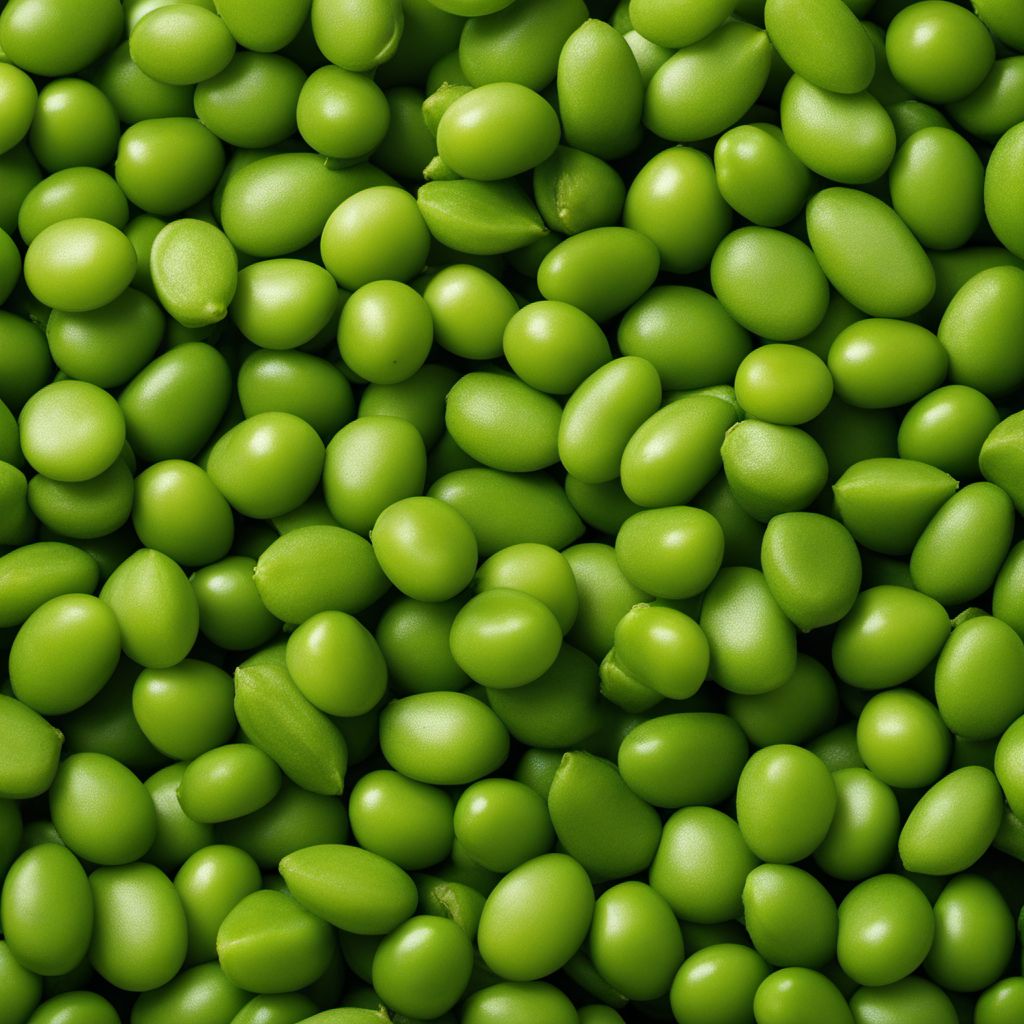
Ingredient
Soyabeans (with pods)
The Mighty Legume: Exploring Soyabeans (with Pods)
Soyabeans (with pods), also known as edamame, are small, green beans encased in a thin, fuzzy pod. They have a slightly sweet and nutty flavor, with a tender yet firm texture. These beans are often enjoyed by popping them out of the pod and can be eaten raw or cooked, making them a versatile ingredient in both traditional and modern cuisines.
Origins and history
Soyabeans have a long history that can be traced back to ancient China, where they were first cultivated around 5,000 years ago. From there, soyabeans spread to other parts of Asia and eventually reached Europe and the Americas. Today, soyabeans are widely cultivated and consumed worldwide, particularly in Asian cuisines such as Japanese, Chinese, and Korean.
Nutritional information
Soyabeans (with pods) are a nutritional powerhouse, packed with protein, fiber, vitamins, and minerals. They are an excellent source of plant-based protein and contain all essential amino acids. Additionally, they are rich in folate, iron, calcium, and vitamin K. These beans are also low in calories and fat, making them a healthy choice for individuals of all ages.
Allergens
There are no known allergens associated with soyabeans (with pods). However, individuals with soy allergies should exercise caution and consult with a healthcare professional before consuming them.
How to select
When selecting soyabeans (with pods), look for bright green pods that are plump and firm to the touch. Avoid pods that are discolored, shriveled, or have visible signs of damage. The beans inside should be a vibrant green color and should not appear wrinkled or discolored.
Storage recommendations
To maintain the freshness of soyabeans (with pods), store them in a perforated plastic bag or a container in the refrigerator. They can be kept for up to a week, but it is best to consume them as soon as possible for optimal flavor and texture.
How to produce
Soyabeans (with pods) can be grown in home gardens, provided the climate is suitable. They require full sun and well-drained soil. Sow the seeds directly in the ground or in containers, ensuring they have enough space to grow. Harvest the pods when they are fully developed and the beans inside are plump and bright green.
Preparation tips
To prepare soyabeans (with pods), bring a pot of salted water to a boil and add the pods. Cook for 3-5 minutes until the beans inside are tender. Drain and rinse with cold water to stop the cooking process. The beans can be enjoyed as a snack, added to salads, stir-fries, or soups, or used as a topping for rice or noodles.
Substitutions
There are no suitable substitutions for soyabeans (with pods) due to their unique flavor and texture. However, shelled edamame or other types of beans can be used as alternatives in certain recipes.
Culinary uses
Soyabeans (with pods) are commonly used in Asian cuisines, particularly in Japanese, Chinese, and Korean dishes. They are often served as a side dish, either steamed or boiled, and sprinkled with salt. Edamame is also a popular ingredient in stir-fries, salads, sushi, and dumplings.
Availability
Soyabeans (with pods) are commonly available in countries with a strong tradition of soybean cultivation, such as China, Japan, South Korea, and the United States. They can also be found in many supermarkets and specialty stores around the world.
More ingredients from this category » Browse all

Rice beans (with pods)
The Versatile Delight: Exploring Rice Beans with Pods
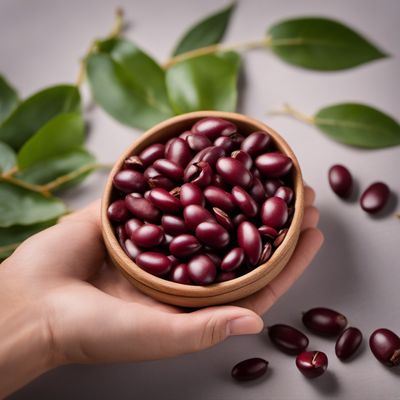
Azuki beans (with pods)
The Versatile Azuki: A Nutrient-Packed Legume with a Crunch

Broad beans (with pods)
The Verdant Gems: Exploring the World of Broad Beans

Yardlong beans (with pods)
The Versatile Veggie: Exploring Yardlong Beans

Vetches (with pods)
The Versatile Vetches: Pods Packed with Potential
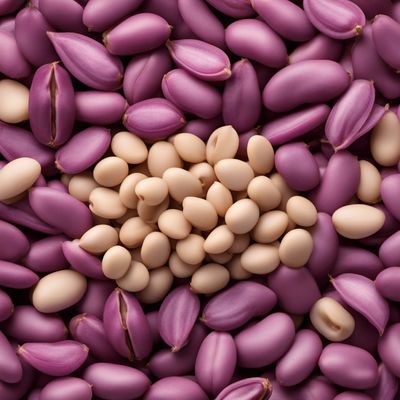
Lablab beans (with pods)
The Versatile and Nutritious Lablab Beans: A Pod of Health and Flavor

Sword bean (young pods)
The Versatile Bean of the Tropics
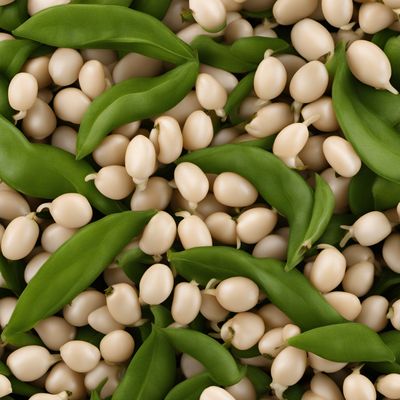
Black eyed peas (with pods)
The Versatile Delight: Exploring the World of Black Eyed Peas with Pods

Mung beans (with pods)
The Versatile Green Gem
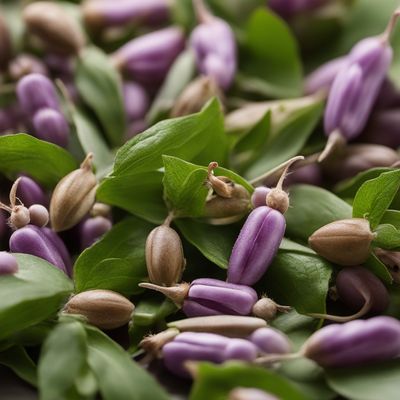
Monantha vetches (with pods)
The Podded Delight

Guar beans (with pods)
The Versatile Guar Bean: A Nutrient-Rich Pod of Possibilities
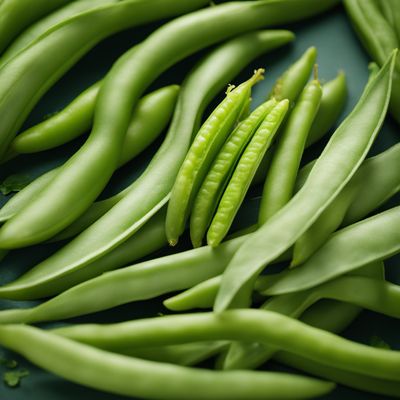
Slicing bean (young pods)
The Versatile Delight: Exploring the World of Slicing Beans
